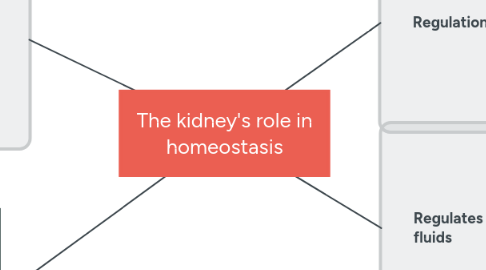The kidney's role in homeostasis
por Patricia Jarito


1. Renal metabolism
1.1. removal of waste products via urine formation
1.1.1. a. filtration: allows water and small solutes to pass but blocks blood cells and large proteins
1.1.2. b. reabsorption: of electrolytes and nutrients back into the bloodstream
1.1.3. c. secretion: of waste material (waste ions and hydrogen ions) into the renal tubules which when combine with filtrate becomes urine
2. Electrolytes Balance: The kidneys help maintain electrolyte concentrations by filtering electrolytes and water from blood, returning some to the blood, and excreting any excess into the urine.
2.1. 1. Sodium: help the body maintain the normal fluid levels in the fluid compartments
2.2. 2. Potassium: helps regulate fluid balance, muscle contractions and nerve signals
3. Regulation of Hormone
3.1. 1. Erythropoietin: regulates erythropoiesis or production of red blood cells in the bone marrow
3.1.1. when oxygen supply decrease in blood, red blood cells are produced

